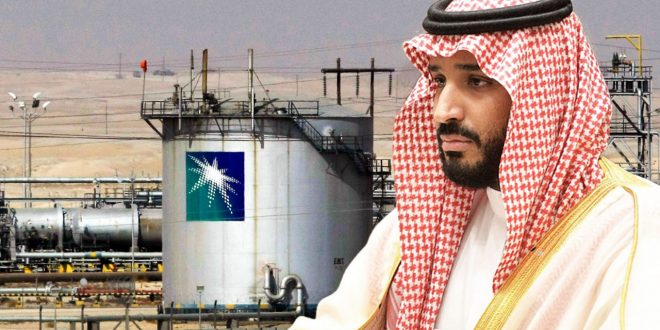Saudi Arabia’s plans to diversify its economy hinges largely on funding from Aramco and other leading public sector entities while large private sector players are expected to join the massive 5 trillion-riyal ‘Shareek’ investment plan.
The recent confirmation by Saudi Arabia’s Crown Prince Mohammed Bin Salman that the kingdom is in talks to sell a 1 per cent stake in state oil giant is a clear indication that the Kingdom will rely on funding through Aramco to finance a lion’s share of its massive economic diversification plan.
Saudi Arabia’s newly announced investment programme aims to achieve a big leap in economic revival with the authorities aiming to increase domestic non-central government investments from the SAR4 trillion ($1.1 trillion) level realised over 2009-2018 to SAR10 trillion over the next decade, an ambitious 150 per cent increase.
Shareek programme
While the programme is expected to boost domestic private sector investments up to 20 per cent, domestic investments by large companies could be key to the success of ‘Shareek’.
While the Shareek programme was opaque on the funding of the ambitious investments when it was announced in late March, it has been safely assumed that the biggest contributions would come from Aramco, the PIF and SABIC.
Now it is beyond any ambiguity that Saudi Aramco will be at the centre of the investment programme’s funding. Clearly, sell-downs of Aramco or PIF stocks is probably the easiest and safest funding avenue for investments.
The potential sale of one per cent of Aramco shares, at the current valuation could fetch up to $19 billion. In its 2019 initial public offering in which Aramco sold about 2 per cent of its stock on the Riyadh bourse raised close to $30 billion.
The money was transferred to the PIF, kingdom’s sovereign wealth fund and was meant to support investments to diversify the economy away from a reliance on oil.
Selling non-core assets
Since then, Aramco has also taken on debt and started selling off some non-core assets to maintain a $75 billion dividend, most of which goes to the state.
Going forward, Aramco could easily maintain and even enhance the dividends for minority shareholders, while limiting the government portion of the dividends in favour of higher investments.
Additionally, Aramco’s robust balance sheet can easily accommodate additional leverage to support any government-sponsored projects.
The Kingdom’s economy battered by the coronavirus pandemic shrank the most in more than three decades last year, according to estimates from the International Monetary Fund. However, the latest IMF forecasts point to a fast recovery starting this year.
Clearly, massive investments supported by public sector giants and private sector leaders are expected to accelerate Saudi Arabia’s post-COVID economic revival and diversification.

 Iran Energy News Oil, Gas, Petrochemical and Energy Field Specialized Channel
Iran Energy News Oil, Gas, Petrochemical and Energy Field Specialized Channel



